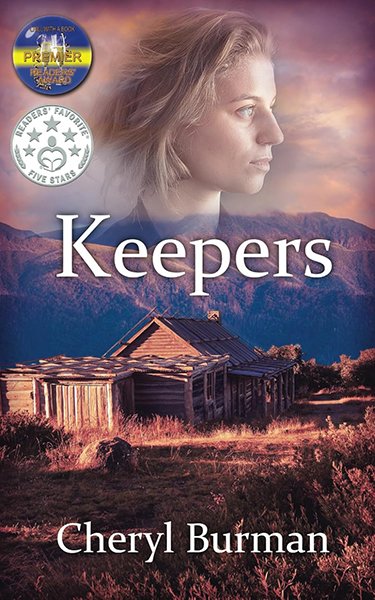How Diverse Settings and Genres Shape the Stories of an Award-Winning Author
Cheryl Burman, a literary talent with roots in both Australia and the Forest of Dean, UK, has carved a unique niche in the world of historical fiction and fantasy. Her diverse background and rich experiences have infused her writing with a depth and authenticity that resonates with readers across the globe. Burman’s impressive portfolio includes two award-winning historical fiction novels, one of which has achieved bestseller status on US Amazon, alongside two novellas and a captivating fantasy series for younger audiences. Her short stories and flash fiction, celebrated for their narrative prowess, have found homes in various collections and anthologies.
A dedicated student of the writing craft, Burman shares her insights through articles and a popular blog, guiding aspiring writers with her expertise. Under the name Cheryl Mayo, she has also played a pivotal role in nurturing local literary talent as the former chair of the Dean Writers Circle and a founder of Dean Scribblers, a group dedicated to fostering creative writing among young people in her community.
In this interview, Cheryl Burman opens up about the profound influence of her Australian heritage and her life in the Forest of Dean on her storytelling. She discusses the inspiration behind her diverse genres, the development of beloved characters like Alf from “Walking in the Rain,” and the historical and mythical elements that enrich her narratives. Burman also reflects on her work with young writers and offers valuable advice to those embarking on their own literary journeys. Join us as we delve into the mind of a writer who seamlessly blends history, myth, and personal struggle to create stories that captivate and inspire.
Your experiences in both Australia and the Forest of Dean have significantly influenced your writing. How do these diverse settings inspire the themes and characters in your stories?
Readers are often told to ‘write what we know’. While Australia and the Forest are indeed diverse settings, they are both places I love and are familiar with, and each provides a deep well to draw on. They are, however, different wells.
As the country where I was born and grew up, I burrowed deeply into memories of places and people from my childhood in Australia for my women’s fiction novel Keepers and its two spinoffs. Set in post world war two Australia, the story is loosely based on family lore, weaving real events into a dramatic tale. I had fun playing fast and loose with the personalities of friends and family, creating new characters, and placing the combined cast into historical places they may or may not have visited.
The Forest of Dean provides a different, more vicarious, inspiration given I moved here relatively late in life. This is a place full of history, legend and ancient traditions, and a landscape scattered with the remains of a fascinating past. It’s these secondhand experiences which whisper a hundred stories in my willing ears.
From middle-grade fantasy to historical fantasy, your writing spans multiple genres. What motivates you to explore such diverse literary landscapes, and how do you approach the challenge of switching between genres?
I’ve been an avid and eclectic reader of fiction since childhood. So while I started writing with middle grade fantasy, I saw no reason why that should be my only genre, just as I wouldn’t read only one type of book. Switching between genres is not a challenge for me, but an opportunity to tell a new story in a way appropriate to that story and its target audience. I have much to draw on as examples. Having said that, over time I’ve developed a style of my own – what authors call ‘voice’ – and this can work as a unifying factor. It makes life easier for me, and it helps my readers feel comfortable that this is ‘another Cheryl book’ and therefore they are likely to enjoy it whatever the genre.
Your latest work, Walking in the Rain, delves into themes of love, regret, and second chances. What inspired Alf’s journey, and how did you develop his character throughout the series?
Dear Alf, everyone loves him. In fact, it was Alf’s situation at the end of Keepers which led to Walking in the Rain – many fans were outraged at his fate! Alf’s journey from being Teddy’s self-sacrificing sidekick to finding his own true happiness was a delight to write. His fumbling honesty with Raine, and how she responds, his ongoing inner turmoil and, finally, his decision to stop moping and get a life of his own, has endeared Alf to many. His character arc needed to be steady and thoughtful, taking time and with some backward steps, as he worked his way through his self-doubts to that ‘lightbulb’ moment.
In River Witch, Hester battles societal expectations and personal ambitions in 19th-century England. What drew you to write about this historical period and the themes of witchcraft and empowerment?
The story behind River Witch fell into my lap when I was asked to edit a non-fiction account of a Forest of Dean woman tried for witchcraft in 1906 (yes, 1906). My initial intention was to write a biographical novel, but the research was thin. As a lover of magical realism, I decided to combine elements of myth and legend from the Forest and go with historical fantasy instead. Much more fun! So the true story inspired the witchy vibes. The empowerment? That fell out of the tale as I wrote it, as did other themes such as resilience and reconciliation.
As a founder of Dean Scribblers, you encourage young people to explore creative writing. How has this experience influenced your own writing, and what advice would you give to aspiring young authors?
Helping young people craft a story is always a joy. In terms of my own writing, it’s shown me that kids as young as ten have a good grasp of the realities of the world (a little sad), tend to be a tad bloodthirsty and at the same time can portray deep emotion. It means I don’t need to be bland when writing for middle graders!
My advice to them? Keep writing.
Your novels often weave elements of history, myth, and personal struggle. How do you balance these components to create engaging and relatable narratives for your readers?
All readable fiction is about personal struggle, ‘the hero’s journey’. In fact, one piece of advice I do give young people is to throw as many obstacles as possible in your character’s path and see how they cope. But writers and readers have preferences for different settings of the tale: fantasy, historical, romcom, women’s fiction etc.
History and myth provide the backdrops to my stories. But more than that, they also drive the way characters behave and make choices, and thus they inform their struggles. In Keepers, the social mores of 1951 dictated Raine and Teddy’s behaviour and triggered the whole messy tale. Similar, River Witch is a story of the time’s prejudices and their impact on Hester.
Relevance is key for a relatable narrative – characters must be believable in their setting.
EDITOR’S CHOICE
Keepers by Cheryl Burman is a beautifully crafted, emotionally gripping tale of love, resilience, and self-discovery. An unforgettable read!
Keepers by Cheryl Burman is a compelling and emotionally charged novel that masterfully blends historical fiction, literary fiction, and women’s fiction into a seamless and unforgettable reading experience. Set in 1951 Australia, the story follows Raine, a resilient and determined woman who finds herself on a tumultuous journey both physically and emotionally.
At eight months pregnant, Raine’s life takes a dramatic turn when her husband, Teddy, mysteriously disappears, leaving behind a cryptic telegram. Despite their rocky start, Raine and Teddy’s marriage had been progressing well, but his sudden absence throws her into a whirlwind of grief, anger, and confusion. As she grapples with the challenges of raising their child and the realization that she is expecting another, Raine’s strength and resolve are put to the test.



